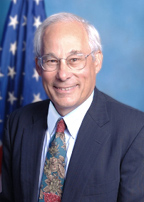The American Health Care System
What is the health care system? What is the medical care system? Are they systems? In this course we will discuss the AHCS as if it were a unified structure. At the same time we will point out the many ways in which it is not.
|
Medical care is often understood as the more clinical aspects that take place in the traditional medical setting. Health is a much broader concept. The health care system extends far beyond the exam room and we will see this in upcoming week. For the purposes of this course we will use the term AHCS to refer to health services, health care delivery, public health, and traditional medical care |
The following table gives you an idea of the complexities of health care delivery in our country. Note that it is divided into organizations (education/research and or managed care/integrated networks), individual suppliers, insurers, providers, payers, funders, and—last but not least—the government. We will be discussing all of these components over the course of this semester, so keep this chart handy.
 |
Roll over the tabs to view more information. |
|
This content requires JavaScript enabled.
|
|
The American Health Care System as a Non-System
Though the American health care system is a far cry from being a well-oiled machine, it does have various components that are interdependent and share common goals. These components do fit into a systems model, despite all its limitations. Shi and Singh use this systems framework to illustrate some basic foundations that support the interaction between input (resources) and output (outcomes), as well as the underlying structure that supports the process dynamics, which evolve over time.
Surely, the American health care system is far from perfect, but, then, by now you probably realize that no perfect system exists anywhere. Americans have access to a patchwork of subsystems (like managed care, the Veterans Administration, and emerging IDSs) that characterize health care delivery in the US. However, the systems framework does give us at least a starting place to attempt in an organized fashion to understand an extremely convoluted, confusing, and costly health care system, and perhaps, a place to begin our quest to find acceptable solutions to our problems.
Atul Gawande is a surgeon and writer from the Boston area. Watch the video below for an academic and clinical perspective on our broken medical care systems. Focus in particular, to the questions below:
- What does he mean when he says this is not a system?
- What are the three steps for making systems work?
- Who are the cowboys?
- Who are the pit crews?
|
Atul Gawande: How do we heal medicine? |
Consider the information taken from the first chapter of a recent IOM report entitled Best Care at Lower Cost: The Path to Continuously Learning Health Care in America:
- If shopping were like health care, product prices would not be posted, and the price charged would vary widely within the same store, depending on the source of payment.
- If automobile manufacturing were like health care, warranties for cars that require manufacturers to pay for defects would not exist. As a result, fewer factories would seek to monitor and improve production line performance and product quality.
- If airline travel were like health care, each pilot would be free to design his or her own preflight safety check, or not to perform one at all.




